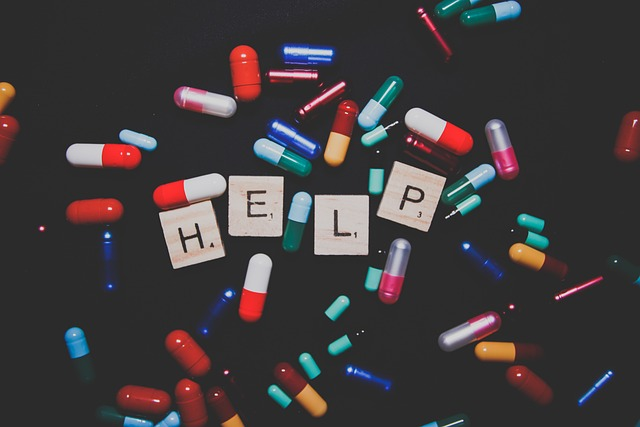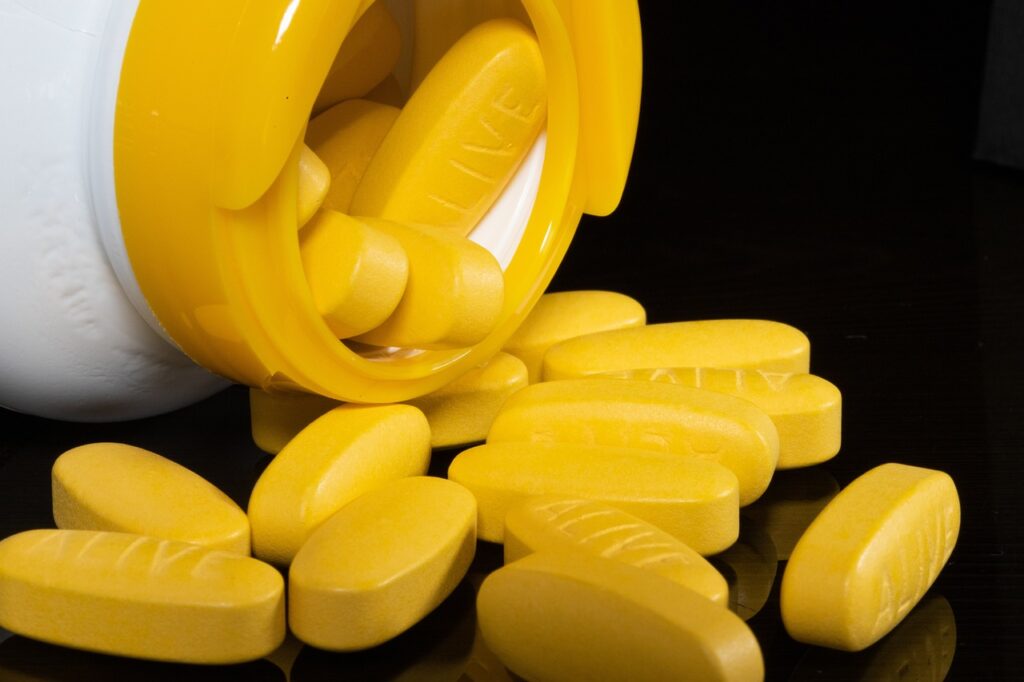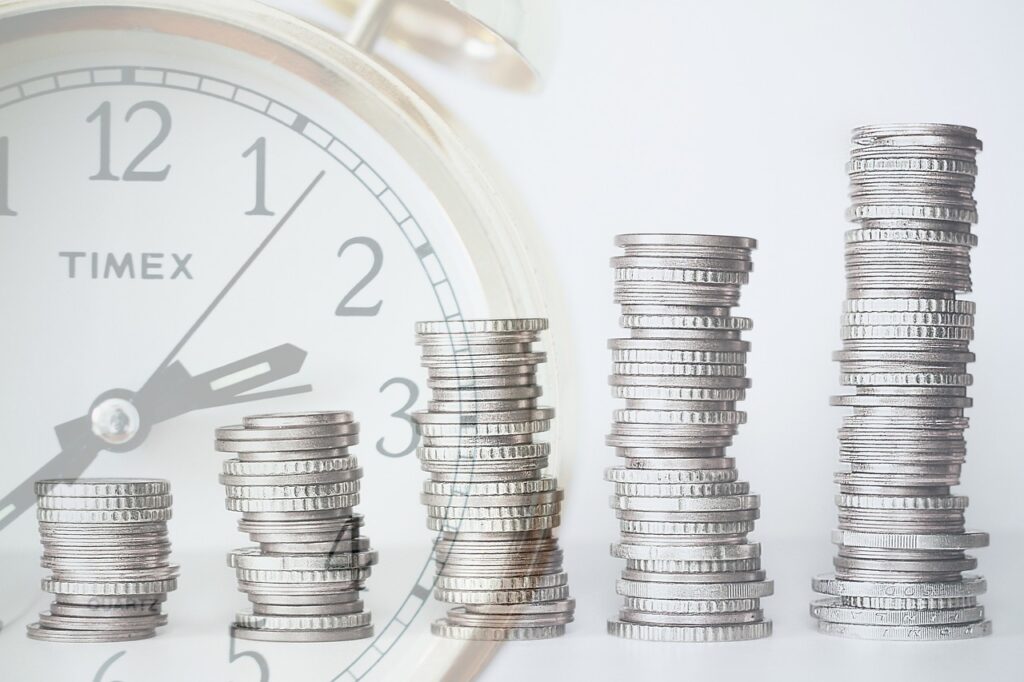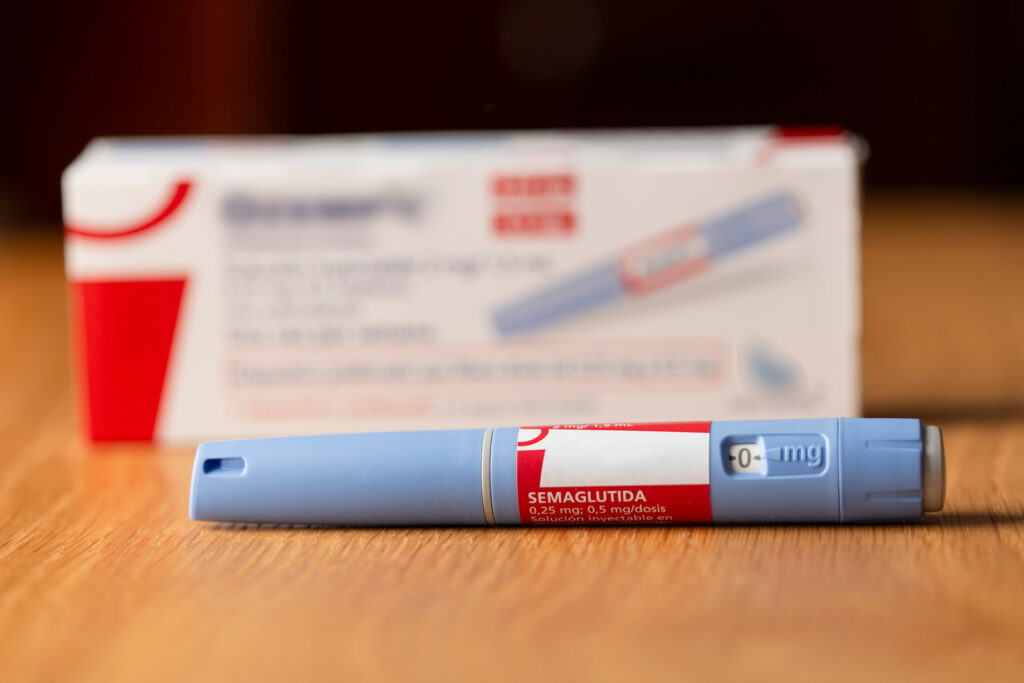Understanding Gabapentin for Dogs: Essential Dosage Guidelines & Potential Side Effects
Understanding Gabapentin for Dogs: Essential Dosage Guidelines & Potential Side Effects

If your dog suffers from chronic pain, you may wonder if gabapentin is a safe and effective pain medication. Gabapentin also has anticonvulsant properties, making it beneficial for adjunctive therapy for preventing seizures in dogs. Gabapentin, commonly prescribed ‘off-label’ by veterinarians, offers relief for nerve pain, aids in seizure control, and helps treat anxiety, particularly easing fear and anxiety associated with veterinary visits. Understanding its uses, potential side effects and proper administration are crucial to ensuring your pet’s safety and well-being.
Key Takeaways
Gabapentin is widely prescribed off-label for dogs to manage chronic pain, control seizures, prevent seizures gabapentin, and reduce anxiety, even though it’s not FDA-approved for these uses in canines.
Correct gabapentin dosage is crucial and varies based on a dog’s weight, condition, and concurrent medications; ongoing veterinary guidance is essential to prevent potential side effects or interactions.
While beneficial for many dogs, gabapentin can have side effects and interactions with other drugs; monitoring and veterinary advice are key when starting, adjusting dosage, or discontinuing use.
Demystifying Gabapentin for Canine Care in Veterinary Medicine
In the realm of veterinary medicine, gabapentin has emerged as a commonly prescribed medication for alleviating primarily nerve pain in dogs. Initially designed for human application and known by several brand names such as Neurontin, Aclonium, Equipax, and Gantin, veterinarians now routinely prescribe this drug to mitigate the discomfort associated with ongoing pain conditions in canines. Its effectiveness is notable not only for treating nerve pain but also for its potential to manage seizures and anxiety.
Gabapentin is also used to treat chronic pain in dogs, especially neuropathic pain that arises from nerve damage or dysfunction. Additionally, gabapentin is recognized for preventing seizures in dogs, particularly those with refractory seizures or when current medications are insufficient, due to its anticonvulsant properties.
It’s essential to be aware that prescribing gabapentin falls into an ‘off-label’ category when it comes to our canine companions. This designation indicates that while veterinarians frequently recommend it, the FDA hasn’t formally sanctioned its use for these dog applications. Being ‘off-label’ does not suggest any safety or efficacy concerns. Rather it signifies that although initially approved with other intentions or species in mind, practical observations have broadened its usage.
Confronting veterinary treatment options can sometimes seem overwhelming, given your concern over your dog’s health. Ensuring proper guidance from a veterinarian becomes indispensable before initiating any regimen involving gabapentin – they will ascertain whether this medication suits your dog’s specific needs assessing necessary factors.
Appropriate dosage determination
Overview of possible side effects related
Individual responses vary widely among pets, making personal vet consultations imperative. One size doesn’t fit all when considering medical treatments.
As you would seek advice from a physician before self-medicating with something like gabapentin yourself, so should professional counsel precede administering such drugs to your pet. Each animal presents distinct circumstances necessitating individualized therapy plans, including examining concurrent medications’ present health states, among others. The utmost importance rests on safeguarding their overall welfare.
The Therapeutic Role of Gabapentin in Dogs

In veterinary medicine, gabapentin serves a diverse purpose in treating dogs. By inhibiting calcium channels within the brain, it diminishes activity from excessively excited neurons. These overactive neurons can lead to conditions such as nerve pain, seizures, and anxiety. The distinct way in which gabapentin functions renders it an invaluable tool for controlling chronic pain, managing seizure disorders, and alleviating anxiety among canines.
Gabapentin is also beneficial in preventing seizures in dogs, especially those with refractory seizures or when current medications are not effective enough. Its anticonvulsant properties make it an excellent adjunctive therapy.
To understand its effectiveness better: How does gabapentin carry out these roles? Here is an explanation.
Gabapentin as Chronic Pain Medication for Dogs

Managing chronic pain, and more specifically neuropathic pain, can be pretty tricky. Traditional pain relievers often fall short of providing comfort to many dogs who suffer from this condition. Gabapentin serves as a valuable treatment option to treat pain associated with conditions such as cancer, arthritis, or intervertebral disk disease. It offers relief by aiming at the alpha2delta-1 auxiliary subunit of voltage-gated calcium channels in neurons, which controls the flow of calcium and influences synaptic transmission. This means it blocks specific nerve signals from reaching the brain and decreases nerve-related pain.
The effects of gabapentin also include:
Alteration of neurotransmission within the spinal cord that plays a part in its ability to block out pain
Reductions in anxiety for felines
Improvements to sleep quality for felines
Lessening aggression amongst feline populations
It’s impressive how such a small compound can dramatically impact our pets’ well-being.
Gabapentin’s capabilities extend further.
It boosts noradrenaline release inside the spinal cord by activating descending noradrenergic pathways.
It has gained recognition for minimizing chronic discomfort.
Its properties serve to reinforce overall control over discomfort,
Assisting dogs dealing with enduring or nervous system-related distress.
So what happens if your canine companion is already on other medications for managing their affliction? Is there room for incorporating gabapentin into their regimen? Certainly! When used alongside existing treatments as an adjunctive therapy method, gabapentin may prove highly effective when integrated into holistic care routines aimed at tackling persistent painful conditions like arthritis—even when standalone medications do not fully alleviate suffering.
Despite being scientifically complex regarding how it operates upon cerebral pathways concerning ache modulation, Gabapentin’s fundamental purpose remains clear: assisting us efficiently in combating physical agony experienced by our beloved canines.
Using Gabapentin to Treat Seizures in Dogs

Gabapentin has proven to be an influential treatment for managing canine seizures, mainly when used to treat seizures in conjunction with other anti-convulsant medications. Dogs struggling with stubborn, hard-to-control seizures or those needing additional support on top of their primary anti-seizure medication may find gabapentin a beneficial adjunct therapy.
Gabapentin is also effective in preventing seizures in dogs with refractory seizures, offering significant benefits as an adjunctive therapy when current medication regimes are no longer effective enough.
The drug’s ability to dampen seizure activity stems from its interaction with the alpha2delta-1 subunit within voltage-gated calcium channels in the brain. This binding action inhibits the discharge of excitatory neurotransmitters that can lead to neuronal hyperactivity and prevent seizures. In simpler terms, gabapentin calms overactive brain cells to help stop seizures. Essentially, gabapentin acts as a tranquilizing force quieting down the neurological chaos akin to neurons gone wild.
Notable changes in your dog’s seizure patterns could become evident relatively swiftly after they begin taking gabapentin—often within several weeks’ time frames. Such prompt results offer not only relief for our furry companions but also provide considerable reassurance for pet owners witnessing these distressing events.
Incorporating medications such as gabapentin into your dog’s healthcare regimen can substantially alter and improve how you manage their condition when dealing with challenging cases of epilepsy or similar disorders. While it doesn’t serve as an all-encompassing solution for treating seizures, this type of pain-relief medication holds significant potential for enhancing overall life quality among dogs diagnosed with seizure-related issues.
It is essential to always adhere strictly to veterinary guidance concerning administering any anti-seizure drugs like gabapentin. Correct dosages are imperative not only in preventing future epileptic incidents effectively but also because abruptly discontinuing use could induce withdrawal-induced convulsions—always engage openly with your vet whenever you have questions or uncertainties about using this form of medical intervention.
Gabapentin to Alleviate Anxiety

Gabapentin not only provides pain relief and prevents seizures, but it also plays a significant role in mitigating anxiety in dogs. Like humans, canines may experience anxiety due to various triggers such as loud sounds, new settings, or stressful scenarios, including trips to the vet. Gabapentin aids in reducing dog anxiety by lowering the levels of excitatory neurotransmitters that cause neurons to be overactive, thus fostering a more tranquil mindset.
For instances where canine anxiety is linked with particular events—such as dread of thunder or stress during visits to the veterinary clinic—gabapentin serves as an effective means for managing these fears. It acts like a comforting shield helping your pet cope with tense occasions.
To effectively use gabapentin before an expected nerve-wracking event for your dog, administering it at an initial dosage between 30-60 mg/kg about one to two hours before can help maintain calm throughout situations like storms, car travel, or vet appointments.
Sometimes, vets might combine gabapentin with trazodone when treating distress and discomfort simultaneously in dogs. This combo works toward delivering wider-ranging solace amid taxing times. Whether your pooch’s nervousness is circumstantial or an ongoing chronic issue, gabapentin could improve their quality of life through enhanced relaxation.
Knowing we can access medications such as gabapentin helps us provide our four-legged friends with less angst-filled experiences while exploring their environments. Remembering consultation with the veterinarian remains crucial, though, as they are best suited to confirming whether gabapentin fits well into your dog’s care plan and establishing what constitutes its suitable quantity for administration.
Determining the Right Dosage for Your Dog
Ensuring that your dog receives the proper amount of gabapentin is crucial, just like with other medications. The appropriate dosage will vary based on factors such as your dog’s weight, the purpose for administering it, and how your pet reacts to the drug. Fortunately, you can rely on guidance from your veterinarian throughout this process.
Gabapentin is also used for preventing seizures in dogs, especially those with refractory seizures or when current medications are not effective enough. Its anticonvulsant properties make it beneficial as adjunctive therapy, and the correct dosage is essential for this purpose.
Particular details regarding how often and how long treatment should be administered, along with modifications needed due to kidney or liver disease in dogs, are essential considerations.
Frequency and Duration of Treatment
Regarding the frequency and duration of administering gabapentin to your canine companion, it should be given two to four times daily as per the veterinarian’s guidance. This ensures a consistent drug concentration in your dog’s system for effective relief and management.
Be aware that after giving a dose of gabapentin, it may take an hour or two before its effects become noticeable in alleviating pain. If there is no immediate improvement in your dog’s condition, patience is advised as the medication gradually exerts its effects.
The length of time your dog will need to remain on gabapentin varies. While some dogs might require lifelong treatment due to chronic issues, others may not. Always consult your veterinarian, who can recommend an appropriate treatment plan tailored specifically for your pet.
If you ever miss administering a dose of gabapentin, do give it at once upon realization but steer clear from double-dosing if the next scheduled dosing time is near—resume the usual regimen. Maintaining regularity in providing this medication cannot be overstressed.
To ensure optimal control of pain symptoms along with seizure and anxiety suppression using gabapentin, maintain strict adherence to both dosage amount and timing recommended by veterinary professionals. Please get in touch with the vet immediately for assistance with any questions or concerns regarding this process.
Adjustments for Kidney Disease
When treating a dog diagnosed with kidney disease, special care must be taken if prescribing gabapentin. The reason for this caution is that dogs eliminate gabapentin mainly through the kidneys and only to a small extent via liver metabolism. When the kidneys are impaired by disease, their ability to expel gabapentin decreases, which might necessitate alterations in dosage.
What happens exactly? In canines suffering from kidney impairment, it may become necessary to reduce the amount of gabapentin given due to compromised renal clearance abilities. This precaution helps prevent drug accumulation at levels that could prove toxic within your pet’s body. Veterinarians will consider your dog’s level of kidney function while calculating an appropriate dose.
Administering antacids within two hours before or after giving gabapentin should be avoided in dogs with kidney issues since these can diminish how well gabapentin is absorbed into their system, thereby undermining its efficacy. That’s another reason why full disclosure about any other treatments or supplements your dog receives becomes critical information for your veterinarian.
Although managing canine kidney disease presents challenges, vigilant management and dosage tailoring allow drugs like gabapentin to still play a constructive role in therapeutic regimens. With consistent veterinary oversight, you can successfully manage these hurdles, delivering quality care for your beloved companion animal.
Regardless of whether you are dealing with optimal health, facing complex medical concerns such as kidney difficulties, or accurately calibrating essential Gabepentidn therapy under expert advice from trustworthy veterinarians, rest assured that help receive favorable outcomes in medicinal treatment strategies.
Potential Side Effects and How to Handle Them
Gabapentin, though beneficial for numerous canine conditions, is not devoid of potential adverse reactions. Similar to any therapeutic drug, gabapentin may provoke specific responses in certain canines. It’s critical to comprehend these possible side effects and know how to effectively manage them during your dog’s treatment.
When using gabapentin for preventing seizures in dogs, especially those with refractory seizures or whose current medication regime is no longer effective enough, it is essential to monitor for side effects.
We must also explore the identification of overdose symptoms and adeptly deal with prospective drug interactions that might occur.
Recognizing Signs of an Overdose
As a responsible pet parent, it’s essential to be aware of the signs of a gabapentin overdose in dogs. While gabapentin is generally safe when used as prescribed, an overdose can occur if a dog accidentally ingests too much of the medication.
Symptoms of a gabapentin overdose in dogs include:
Poor muscle control
Increased sedation
Depression
Clumsiness
These overdose symptoms can be alarming to witness, but it’s crucial to stay calm and act quickly.
If a gabapentin overdose is suspected in a dog, the pet owner should immediately contact the veterinarian. Every second counts in these situations and rapid response can make a significant difference in the outcome. Don’t try to induce vomiting or give any other medications unless instructed to do so by the vet.
Remember, prevention is the best cure. Always keep gabapentin and other medications out of your dog’s reach, and follow the prescribed dosage instructions carefully. With these precautions, the risk of a gabapentin overdose can be significantly reduced.
Knowing the signs of an overdose and what to do can help ensure your dog’s safety and well-being. Remember, when in doubt, always contact your vet.
Navigating Drug Interactions
When your dog is on gabapentin, it’s imperative to be aware of possible drug interactions. Ensure to inform your vet about all other medications or supplements your dog is taking, as this could help prevent any harmful effects due to conflicting substances.
While gabapentin can often be used with trazodone for addressing anxiety in dogs without issue, it’s not recommended to combine it with CBD since this may lead to excessive sedation. You must consult with your veterinarian before integrating any new drugs or nutritional additions into the treatment plan of a pet who is receiving gabapentin.
You should pay attention to the scheduling of different medications. Specifically, avoid giving oral antacids within a two-hour window on either side of administering a dose of gabapentin because they can negatively affect each other and reduce the effectiveness of the treatment.
Open communication regarding potential drug interactions between pet owners and their veterinarians is essential in safely managing medication regimens. Keeping vets informed about any changes in either health or medicine intake will help better safeguard against unwanted reactions.
In summary, understanding how various drugs interact becomes vitally essential when treating canine companions using gabapentin. This knowledge empowers owners and contributes to optimizing therapeutic outcomes for pets while diminishing associated risks.
Transitioning Off Gabapentin Safely
Halting the use of gabapentin in your pet needs just as much consideration and expert advice as initiating its use. Discontinuing gabapentin abruptly, especially when it’s administered for controlling seizures or alleviating considerable pain, may lead to severe issues such as withdrawal symptoms. When gabapentin is used for preventing seizures in dogs, particularly those with refractory seizures, it is crucial to taper off the medication to avoid withdrawal symptoms. What steps should you take to wean your dog off this medication without harm?
Possible withdrawal signs from discontinuing gabapentin can encompass the following:
Restlessness
Nervousness
Excessive sweating or panting
Confusion
Shaking
Issues with digestion
Escalated frequency of seizures in dogs prone to them
This list might seem alarming. These adverse effects can be bypassed by methodically tapering down the drug over two to three weeks.
Throughout this phase, careful observation of how your dog reacts to lowered doses is critical. Monitor any alterations in habits, appetite, or general wellness and communicate these observations promptly with your veterinarian. This insight aids veterinarians tremendously in fine-tuning the reduction schedule while safeguarding your dog’s ease during this changeover.
Seek veterinary counsel before attempting to stop gabapentin treatment since doing so could pose risks, especially for those animals that have been using it long-term or those managing major pain concerns due to their condition being seizure-prone. Your vet will help devise a plan tailored specifically towards tapering dosages incrementally and offer support each step along the way until completion.
Take things slowly—stepping down from gabapentin isn’t meant hurriedly, but instead approached delicately, taking one thoughtful move at a time, always focusing first on the comfort and safety of the pet. With professional direction alongside you, work through the process together, ensuring a smooth and secure transition away from medicine.
Alternative Treatments to Consider
Gabapentin is a popular choice for controlling seizures and anxiety and managing chronic pain in dogs, but it isn’t the sole option available. Various other treatments and supplements can aid pain management and enhance your dog’s mobility. These alternatives could either replace gabapentin or supplement its therapeutic effects to suit the specific requirements of your pet. For instance, gabapentin is also effective in preventing seizures in dogs with refractory seizures or those whose current medication regime is no longer effective enough. Among these options are:
Acupuncture
Physical therapy
Massage therapy
Herbal remedies
CBD oil
Omega-3 fatty acids
Always consult your veterinarian when selecting an appropriate treatment strategy for your dog.
Non-medication-based therapies such as:
Pulsed Electromagnetic Field (PEMF) therapy
Veterinary Spinal Manipulative Therapy (VSMT)
Acupuncture is again noted here due to its significance
Therapeutic laser sessions
Hydrotherapy
Medical massage
These interventions offer various modes of handling chronic pain by promoting healing processes, decreasing inflammation levels, and providing relief from discomfort—collectively contributing to an integrative approach in canine pain management.
Pharmaceuticals like gabapentin are herbal medicines and dietary supplements that have potential benefits for managing canine discomfort — substances such as Boswellia, known for anti-inflammatory actions, glucosamine, and chondroitin aimed at sustaining joint health may all be helpful adjuncts or alternatives that support comfort improvement, while also aiding with motion restoration within dogs.
Maintaining a healthy weight is crucial, especially for dogs suffering from painful conditions. Excess weight can exacerbate pain and lead to additional mobility issues. Therefore, it’s essential to promote balanced nutrition and regular physical activity to mitigate these problems.
Using cold packs can help reduce swelling and alleviate soreness, making it a simple yet effective method to provide relief. Consistency in these practices is key to ensuring your dog’s comfort and overall well-being.
Maximizing Savings on Gabapentin with NiHowdy
Managing a dog’s chronic pain, seizures, or anxiety is not only emotionally draining but also poses financial challenges. The costs of medications like gabapentin can accumulate quickly when required for extended periods. NiHowdy introduces an opportunity to reduce the expense of your dog’s medicines while offering the added benefit of earning rewards.
Gabapentin is also used for preventing seizures in dogs, especially those with refractory seizures or when current medications are no longer effective. This can lead to potential cost savings when using NiHowdy’s services.
NiHowdy presents a premier prescription discount card that slashes prices on drugs such as gabapentin even if you lack insurance or Medicare coverage – and it comes with an appealing perk: receive 3% in Bitcoin rewards with every purchase.
Utilizing NiHowdy’s prescription discount service grants access to affordable options across 10,000 prescriptions at approximately 35,000 pharmacies throughout the United States. You could see up to $95 slashed from your prescription expenses or enjoy average savings that typically reach about $35 below standard retail pricing—a substantial relief in handling pet care budgets.
Here are some key advantages provided by NiHowdy’s prescription discount card.
There’s no expiration. Reuse it for future purchases.
Use it alongside Health Savings Accounts (HSAs) using pre-tax dollars
Share cost reduction benefits among all family members—pets included
The perks extend beyond immediate monetary savings. As customers earn Bitcoin rewards through their use of NiHowdy services, these have the potential to appreciate over time. Such growth offers long-term value which may mitigate inflating healthcare costs down the road or be allocated towards other significant expenses—an advantageous strategy both now and looking ahead into one’s financial trajectory.
Summary
In the world of canine care, gabapentin is a versatile medication with a wide range of uses. It can manage chronic pain, control seizures, and reduce anxiety in dogs, making their lives (and yours) more comfortable. Gabapentin is also effective in preventing seizures in dogs with refractory seizures or those whose current medication regime is no longer effective enough, highlighting its anticonvulsant properties and benefits as adjunctive therapy. Correct dosage determination, understanding potential side effects, navigating drug interactions, and transitioning off gabapentin safely are all essential aspects of managing your dog’s treatment. While there are alternative treatments to consider, gabapentin remains a trusted solution for many pet parents. And with the cost savings provided by NiHowdy, managing your dog’s health doesn’t have to break the bank. So here’s to happier, healthier dogs and a brighter future for you both!
Frequently Asked Questions
What is gabapentin used for in dogs?
Gabapentin serves to alleviate chronic pain in dogs, regulate seizures, prevent seizures gabapentin, and diminish anxiety. Its mechanism of action involves obstructing calcium channels within the brain, thereby inhibiting neurons that are excessively stimulated.
How is the correct dosage of gabapentin determined for dogs?
Based on the weight of your dog and the particular reason for treatment, the appropriate amount of gabapentin to be administered is established. The veterinarian will set a starting dose and modify it according to how your dog reacts to the medication.
What are the potential side effects of gabapentin in dogs?
If your dog is taking gabapentin, be aware of possible side effects, including sedation, issues with their gastrointestinal system, and problems with mobility. Should you observe these symptoms, contacting a veterinarian for advice is recommended.
How should a dog be transitioned off gabapentin?
When discontinuing gabapentin for a dog, it’s crucial to slowly decrease the dosage over two to three weeks to avoid withdrawal symptoms. For proper guidance on how to taper off this medication safely, consulting with a veterinarian is highly recommended.
How can I save on gabapentin with NiHowdy?
Utilize NiHowdy’s prescription discount card to reduce the cost of your gabapentin and simultaneously earn Bitcoin rewards equivalent to 3% of each purchase, which have the potential for appreciation in value as time progresses.
Don’t hesitate to take advantage of this opportunity—begin accruing savings now!
Understanding Gabapentin for Dogs: Essential Dosage Guidelines & Potential Side Effects Read More »





























